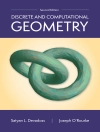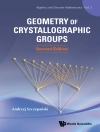This volume originated in the workshop held at Nagoya University, August 28–30, 2015, focusing on the surprising and mysterious Ohkawa’s theorem: the Bousfield classes in the stable homotopy category SH form a set. An inspiring, extensive mathematical story can be narrated starting with Ohkawa’s theorem, evolving naturally with a chain of motivational questions:
- Ohkawa’s theorem states that the Bousfield classes of the stable homotopy category SH surprisingly forms a set, which is still very mysterious. Are there any toy models where analogous Bousfield classes form a set with a clear meaning?
- The fundamental theorem of Hopkins, Neeman, Thomason, and others states that the analogue of the Bousfield classes in the derived category of quasi-coherent sheaves D qc(X) form a set with a clear algebro-geometric description. However, Hopkins was actually motivated not by Ohkawa’s theorem but by his own theorem with Smithin the triangulated subcategory SHc, consisting of compact objects in SH. Now the following questions naturally occur: (1) Having theorems of Ohkawa and Hopkins-Smith in SH, are there analogues for the Morel-Voevodsky A1-stable homotopy category SH(k), which subsumes SH when k is a subfield of C ?, (2) Was it not natural for Hopkins to have considered D qc(X)c instead of D qc(X)? However, whereas there is a conceptually simple algebro-geometrical interpretation D qc(X)c = D perf(X), it is its close relative D bcoh(X) that traditionally, ever since Oka and Cartan, has been intensively studied because of its rich geometric and physical information.
This book contains developments for the rest of the storyand much more, including the chromatics homotopy theory, which the Hopkins–Smith theorem is based upon, and applications of Lurie’s higher algebra, all by distinguished contributors.
İçerik tablosu
A.K. Bousfield, Foreword.-
Takao Matumoto, Memories on Ohkawa’s mathematical life in Hiroshima.-
Carles Casacuberta, Depth and simplicity of Ohkawa’s argument.-
Shane Kelly, Some observations about motivic tensor triangulated geometry over a finite field.-
Ruth Joachimi, Thick ideals in equivariant and motivic stable homotopy categories.-
Takeo Ohsawa, Role of the L
2 Method in the study of analytic Families.-
Carles Casacuberta and Jiri Rosicky, Combinatorial homotopy categories.-
Mark Behrens and Charles Rezk, Spectral algebra models of unstable
vn-periodic homotopy theory.-
Takeshi Torii, On quasi-categories of comodules and Landweber exactness.-
Takuo Matsuoka, Koszul duality for
En-algebras in a filtered category.-
Takuo Matsuoka, Some technical aspects of factorization algebras on manifolds.-
Ryo Kato, Hiroki Okajima and Katsumi Shimomura, Notes on an alegebraic stable homotopy category.-
Jack Morava, Operations on integral lifts of
K(n).-
Tobias Barthel, A short introduction to the telescope and chromatic splitting conjectures.-
Norihiko Minami, From Ohkawa to strong generation via approximable triangulated categories – a variation on the theme of Amnon Neeman’s Nagoya lecture series.












